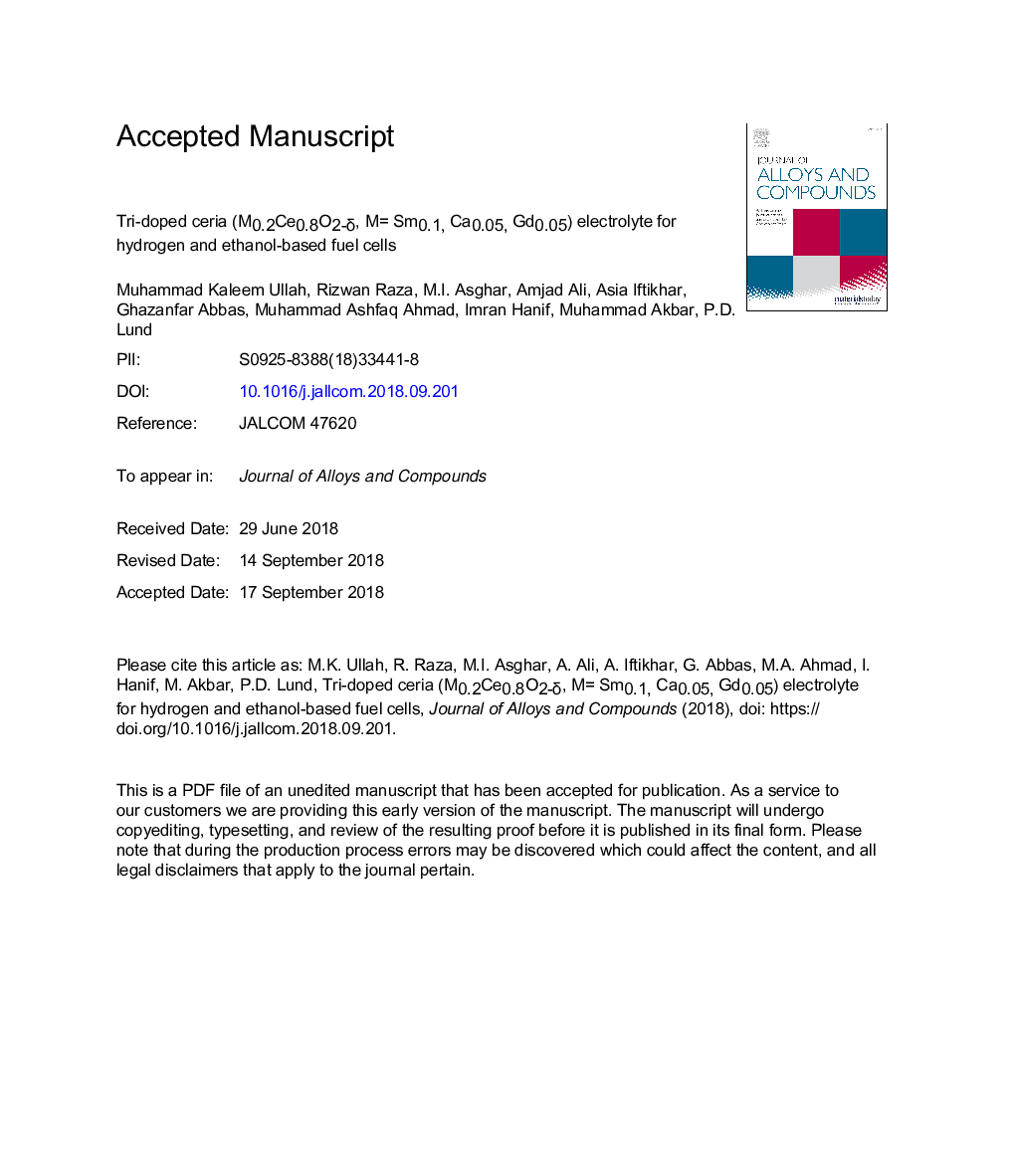| Article ID | Journal | Published Year | Pages | File Type |
|---|---|---|---|---|
| 11020016 | Journal of Alloys and Compounds | 2019 | 21 Pages |
Abstract
In recent scientific research, an interest has been gained significantly by rare earth metals such as cerium (Ce), samarium (Sm) and gadolinium (Gd) due to their use in fuel cells as electrolyte and catalysts. When used in an electrolyte, these materials lower the fuel cell's operating temperature compared to a conventional electrolyte, for example, yittria-stabilized zirconia (YSZ) which operates at a high temperature (â¥800â¯Â°C). In this paper, the tri-doped ceria, M0.2Ce0.8O2-δ (Mâ¯=â¯Sm0.1, Ca0.05, Gd0.05) electrolyte powders was synthesized using the co-precipitation method at 80â¯Â°C. These dopants were used for CeO2 with a total molar ratio of 1â¯M. Dry-pressed powder technique was used to make fuel cell pellets from the powder and placed them in the furnace to sinter at 700â¯Â°C for 60â¯min. Electrical conductivity of such a pellet in air was 1.2â¯Ãâ¯10â2â¯Sâ¯cmâ1 at 700â¯Â°C measured by the ProboStat-NorECs setup. The crystal structure was determined with the help of X-ray diffraction (XRD), which showed that all the dopants were successfully doped in CeO2. Raman spectroscopy and UV-VIS spectroscopy were also carried out to analyse the molecular vibrations and absorbance, respectively. The maximum open-circuit voltages (OCVs) for hydrogen and ethanol fuelled at 550â¯Â°C were observed to be 0.89â¯V and 0.71â¯V with power densities 314â¯mWâ¯cmâ2 and 52.8â¯mWâ¯cmâ2, respectively.
Related Topics
Physical Sciences and Engineering
Materials Science
Metals and Alloys
Authors
Muhammad Kaleem Ullah, Rizwan Raza, M.I. Asghar, Amjad Ali, Asia Rafique, Ghazanfar Abbas, Muhammad Ashfaq Ahmad, Imran Hanif, Muhammad Akbar, P.D. Lund,
